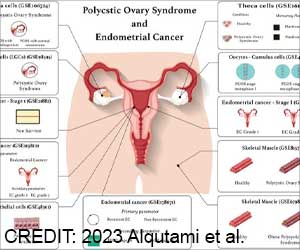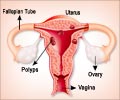Compared to vaginal cuff brachytherapy followed by chemotherapy, pelvic ration reduced the recurrence of endometrial cancer.

‘Adjuvant pelvic radiation should remain the standard of care for high-risk, early-stage endometrial cancer patients.’





Clinical trials in the early 2000s (e.g., Gynecology Oncology Group (GOG)-99, PORTEC) found that external beam radiation therapy to the pelvis following surgery to remove early-stage endometrial cancer reduced tumor recurrence rates compared with post-surgical observation alone, which established adjuvant pelvic radiation as the standard treatment for stage I-II patients. In recent years, however, many physicians have begun treating early-stage patients at higher risk of recurrence with an alternative approach of vaginal cuff brachytherapy followed by chemotherapy. GOG-249 was designed to directly compare the two approaches.
"Our trial clearly demonstrates that adjuvant pelvic radiation should remain the standard of care for high-risk, early-stage endometrial cancer patients. It also suggests that the trend in our field of abandoning pelvic radiation in favor of chemotherapy-brachytherapy combinations for high-risk patients is premature and not supported by clinical evidence," said Marcus Randall, MD, FASTRO, lead author of the study and a professor of radiation medicine at the University of Kentucky in Lexington.
"The cohort of women with high-risk histologies did not demonstrate any benefit from the addition of chemotherapy, but they did experience worse nodal control rates and more short-term side effects."
GOG-249 was a phase III randomized trial designed to test whether adjuvant brachytherapy plus chemotherapy improved recurrence-free survival compared with the standard treatment of pelvic radiation for early-stage, high-risk endometrial cancer.
Advertisement
Most patients (74%) had stage I disease and endometrioid histology (71% versus 15% serous and 5% clear-cell carcinomas). The median patient age was 63 years. All patients underwent hysterectomy prior to radiation or chemoradiation therapy.
Advertisement
Patients with serous, clear-cell or stage II tumors were eligible for a vaginal cuff brachytherapy boost, and 35 percent of the cohort received this additional therapy. The VCB/C group (n = 300 patients) received either high-dose rate (HDR) or low-dose rate (LDR) brachytherapy followed by three cycles of chemotherapy including paclitaxel (175 mg/m 2 - 3 hour) and carboplatin (AUC 6 - 21 days). Nearly all 601 patients accrued for the trial completed treatment (91% PXRT, 87% VCB/C).
There were no statistically significant increases in recurrence-free survival (RFS) or overall survival (OS) in the brachytherapy-chemotherapy arm. At a median follow-up of 53 months, 82 percent of patients were alive and recurrence free at three years for both the VCB/C and PXRT patient groups.
Three-year OS rates were 91 percent for pelvic radiation and 88 percent for the brachytherapy-chemotherapy combination, but this difference was not statistically significant (p = 0.57). Survival distributions were estimated using the Kaplan-Meier method and compared using a log rank test.
The cumulative incidence of pelvic or para-aortic nodal recurrence at five years among the VCB/C group was twice that of the pelvic radiation cohort. The cumulative incidence of vaginal and distant tumor recurrences, however, did not differ significantly between the groups. The cumulative incidence of distant recurrence at five years was 18 percent for both groups.
Short-term side effects were more pronounced on the brachytherapy-chemotherapy arm, while long-term side effects were similar for both treatments. Grade 3 or higher adverse events were reported in 187 patients receiving VCB/C, compared with 32 patients in the PXRT group.
Severe late effects, or side effects that occurred after treatment ended, were reported in 35 patients who received VCB/C and 37 who received PXRT. Side effects were graded using the Common Terminology Criteria for Adverse Events (CTCAE) version 3.
"Previous GOG trials confirmed that pelvic radiation is an effective, safe and tolerable option to manage early-stage endometrial cancer. The current trial confirms that this standard treatment is preferable to the experimental approach of vaginal cuff brachytherapy followed by chemotherapy, in terms of tumor control in the nodal regions and also in terms of acute toxicity. This finding holds true even for patients at a higher risk of recurrence," said Dr. Randall.
"Researchers can focus now on determining the optimal radiation dosing and fractionation schedules for various patient sub-groups, as well as refining the techniques we use to deliver external beam therapy to the pelvis and continue to investigate therapies to decrease distant failures in this high-risk group."
Source-Eurekalert















